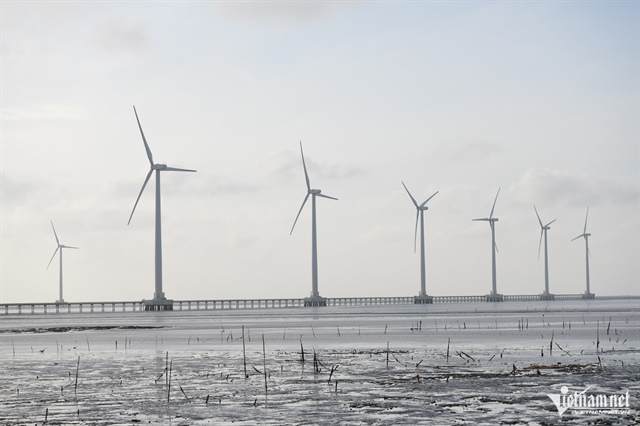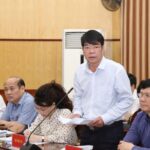Electricity Prices Shouldering Too Many Objectives
At the seminar “Ensuring Power for Growth – Requirements and Solutions” organized by the Government Portal on the afternoon of May 7, former Director of the Price Management Department, Mr. Nguyen Tien Hoa, pointed out three major shortcomings of the current electricity prices.
First, electricity prices have not been implemented according to market price mechanisms. For many years, electricity prices have not been calculated accurately, taking into account all input costs. At the same time, the situation of buying high and selling low has not been resolved.
Second, electricity prices have to bear too many objectives. Specifically, electricity prices must support the growth of the electricity industry, encourage investment attraction, but also ensure macro-economic stability, control inflation, ensure social welfare, and promote electricity saving. It is very difficult to harmonize these objectives, and some of them are not achievable in practice.
Third, the cross-subsidy mechanism for electricity prices has lasted too long, preventing us from implementing a market price mechanism for electricity.
 Electricity prices have not yet been implemented according to market mechanisms. Photo: Hoang Minh |
As a consequence, the electricity industry will incur losses, as the current price does not reflect the true cost of a kWh of electricity. Electricity prices are still subsidized, reducing the incentive to invest in the electricity sector.
Mr. Hoa also pointed out the reality that the electricity industry is always in a negative cash flow situation, which means it is operating at a loss. This indicates that we are unable to balance the cash flow, making it challenging to support the electricity industry’s reproduction, reinvestment, and sustainable development, threatening the goal of ensuring energy security.
Mr. Ha Dang Son, Director of the Center for Energy and Green Growth Research, compared Vietnam’s average electricity price to that of China and India, finding it to be similar, but higher than Bangladesh and Malaysia.
On the other hand, Indonesia, Thailand, Cambodia, Singapore, and the Philippines have higher electricity prices than Vietnam. Singapore’s electricity prices are approaching those of Japan. In Thailand, after reforming the electricity pricing mechanism, especially switching to a time-based model, the average electricity price has increased significantly compared to 3-4 years ago, even doubling.
Mr. Son emphasized that the issue is not simply about “increasing or decreasing electricity prices” but about ensuring that electricity prices accurately reflect the true production costs, maintaining stability, and sustainability in investing in and operating the national electricity system.
Many developed countries are also gradually transitioning to market mechanisms in determining electricity prices, ensuring transparency, including all cost factors, and embracing the trend of investing in clean energy.
If Vietnam maintains electricity prices below the actual cost for an extended period, it may create a temporary competitive advantage for production or social welfare. However, this practice carries the risk of investment imbalances, threatening energy security and sustainable development, as Mr. Son pointed out.
A Reasonable Roadmap Is Necessary to Avoid Price Shocks
According to energy expert Ha Dang Son, the fundamental solution lies in a reasonable, transparent, and market-oriented roadmap for electricity price adjustments, reflecting the full composition of costs, while avoiding price shocks for the people and the economy.
Striking a balance between electricity market liberalization and social stability is a challenging equation that must be solved.
He believes that the signals from the Government have been relatively clear. The issuance of decrees, price control mechanisms, and orientations for electricity price reforms are being implemented in a relatively synchronized manner.

Ensuring transparency in electricity prices is crucial for attracting investors. Photo: Hoang Ha |
Mr. Nguyen Tien Hoa also proposed transitioning electricity price management to a market mechanism by accurately calculating electricity prices and amending the current electricity price table to address existing shortcomings.
Additionally, he suggested eliminating cross-subsidies in electricity prices and replacing them with other regional electricity price policies. Social welfare policies should be separated from electricity prices.
National Assembly Deputy Phan Duc Hieu, a member of the Committee for Economic and Financial Affairs, remarked that the Law on Electricity has undergone significant changes regarding the mechanism for determining electricity prices.
“In my opinion, the most important factor is ensuring transparency and stability in the electricity price mechanism,” he said. At the same time, in attracting social investment in the electricity industry, it is necessary to ensure the reasonableness of costs. Electricity is an essential input for production and business activities.
If we create an overly attractive electricity market with excessive profits, we may turn electricity into a pure investment channel, potentially driving up production costs and negatively impacting the economy. Therefore, lawmaking is a challenging task. We must strike a balance between creating an attractive electricity market to lure investments and maintaining reasonable prices to ensure stable, clean energy supply without imposing excessive pressure on input costs.
The interests of electricity generators and buyers often conflict, with the former seeking to cover their costs and the latter concerned about the impact on their production and business operations. Thus, going forward, we must balance the interests of all parties before moving towards a competitive electricity market as envisioned in the Law on Electricity, Mr. Hieu noted.
By Tâm An – May 8, 2025
“Transforming Tu Son into a Heritage City: A Fusion of Tradition and Modernity”
If the melody of the music video Bắc Bling struck a chord with you, then delve deeper into this vibrant young city – a unique blend of modern and traditional, steeped in rich cultural heritage and brimming with potential. Known as the “Village in the City, City in the Village”, it boasts a distinct charm and a promising future.
The Power Plan Update: Synchronized Implementation for Energy Security
By 2030, Vietnam aims to be among the top 4 ASEAN countries in terms of electricity supply reliability and within the top 3 for electricity access index. Additionally, the country aspires to have 50% of commercial and 50% of residential buildings utilize self-produced and self-consumed rooftop solar power.
The Fresh Vietnamese Milk Producer’s Pledge: Carbon Neutrality and Net Zero
At a recent Carbon Neutrality Certification Ceremony, representatives from the TH Group (owners of the national brand TH true MILK) announced their commitment to maintaining carbon neutrality at two of their member units – TH Milk Joint Stock Company and Nui Tien Pure Water Limited Company. The companies will uphold this status according to the PAS 2060: 2014 standard until 2028, after which they aim to achieve neutrality in accordance with ISO 14068.





















